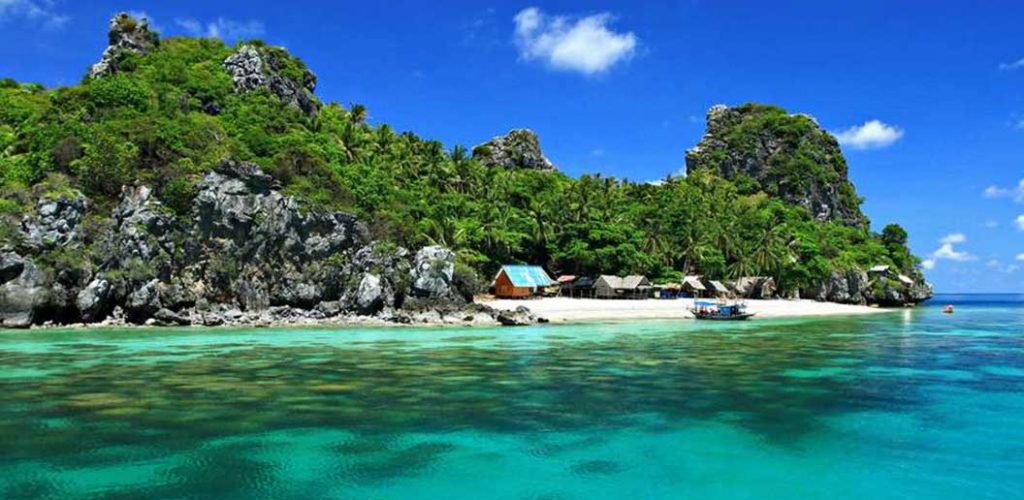Located on the east side of the Malaysian Peninsular on the coast of the Gulf of Thailand, most people pass through Chumphon on their way to its more popular neighbors such as Phuket, Koh Samui or Koh Pha Ngan but few choose to stay there. Like its name (Chumphon means lots of blessings) Chumphon is a hidden gem, roughly 500 km south of Bangkok, it is a quiet beach town with amazing snorkeling sites, mountainside viewpoints and over 200 km of coastline worth exploring.
The Chumphon coast boasts several long and underrated stretches of sand drawing only a trickle of Thais and very few foreign travellers. Adjacent to the Chumphon Airport is the Pathio Coast, also known as the “Royal Gold Coast”, and it is miles of open beaches and limestone surrounded baths. You have your pick of spots to lay your towel on. Due to its close location to the airport, it’s the easiest point of entry to Chumphon and beyond to the islands.
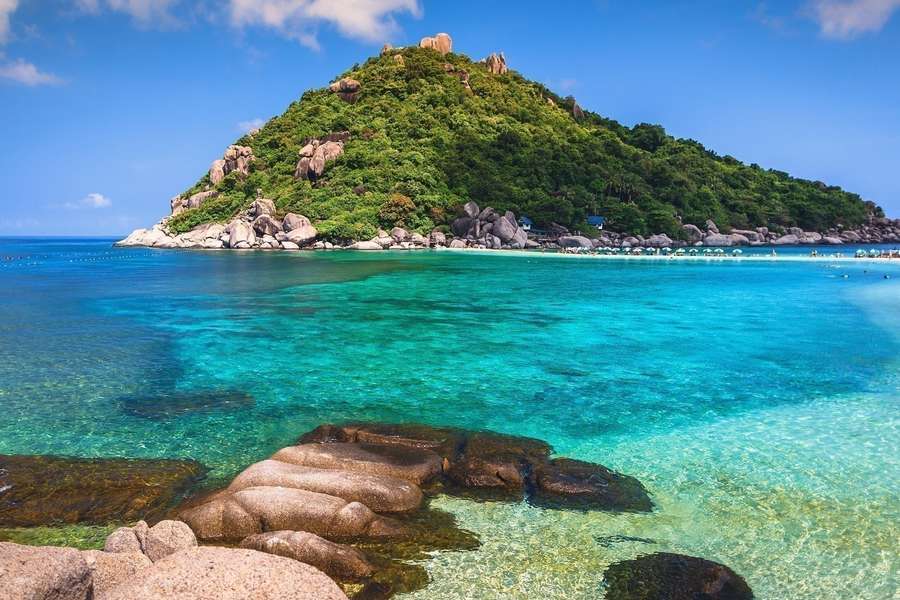 There is a wide variety of beaches and bays from small limestone coves to long open beaches. Among them, Thung Waua Laen (also known as Running Bull Beach) is the most popular; covering about 2 km along the Gulf of Thailand. It has fine, light-colored sand speckled with boutique hotels, small restaurants, beach bars, and sport shops. The beach is a popular place for picnicking and most restaurants around the vicinity provide a picnic mat free of charge. One can easily travel to Thung Wua Laen by hopping on the yellow songthaew that takes off regularly from the city center. Bang Son Beach is mostly untouched with a few resorts under construction. Khao Dinsor (Pencil Hill) is nearby, offering a great view of the beach and surrounding islands. As the highest peak in the district, the hill is also a good viewpoint for bird watching, especially raptors. The Raptor Festival is held here in October annually as hundreds of thousands of birds pass Chumphon to Malaysia, Singapore, Indonesia and Australia. The activities on the mountain lookout include raptor watching and counting the birds plus a raptor exhibition.
There is a wide variety of beaches and bays from small limestone coves to long open beaches. Among them, Thung Waua Laen (also known as Running Bull Beach) is the most popular; covering about 2 km along the Gulf of Thailand. It has fine, light-colored sand speckled with boutique hotels, small restaurants, beach bars, and sport shops. The beach is a popular place for picnicking and most restaurants around the vicinity provide a picnic mat free of charge. One can easily travel to Thung Wua Laen by hopping on the yellow songthaew that takes off regularly from the city center. Bang Son Beach is mostly untouched with a few resorts under construction. Khao Dinsor (Pencil Hill) is nearby, offering a great view of the beach and surrounding islands. As the highest peak in the district, the hill is also a good viewpoint for bird watching, especially raptors. The Raptor Festival is held here in October annually as hundreds of thousands of birds pass Chumphon to Malaysia, Singapore, Indonesia and Australia. The activities on the mountain lookout include raptor watching and counting the birds plus a raptor exhibition.
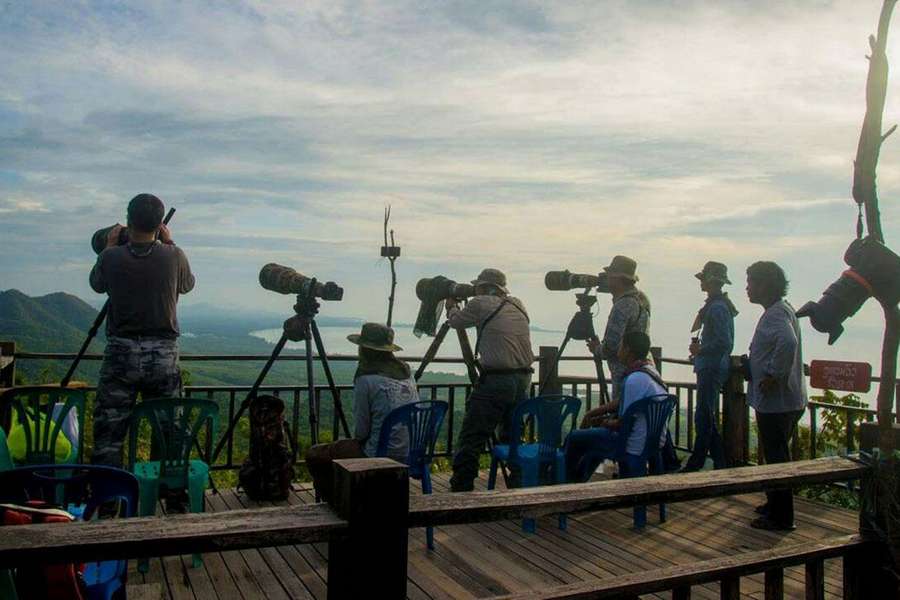 Ao Bo Mao, or Spring Tree Bay, is ideal for the traveler who is seeking peace, quiet and the occasional long walk through nature. Every evening, villagers are combing the beach to collect crabs and shellfish. In high tide, the clear water is perfect for strolling on the beach and swimming. Boats can be hired at the beach to the nearby Ko Khai (Egg Island), the trip takes 15 minutes to the small mountainous island with coral reefs and a sandy beach. A giant clam sanctuary is being developed off the island by local environmentalists. Cape Pathiu is a small fishing village and headland that is being developed into a new tourism hub. The area features Thailand’s only seaside rice terraces.
Ao Bo Mao, or Spring Tree Bay, is ideal for the traveler who is seeking peace, quiet and the occasional long walk through nature. Every evening, villagers are combing the beach to collect crabs and shellfish. In high tide, the clear water is perfect for strolling on the beach and swimming. Boats can be hired at the beach to the nearby Ko Khai (Egg Island), the trip takes 15 minutes to the small mountainous island with coral reefs and a sandy beach. A giant clam sanctuary is being developed off the island by local environmentalists. Cape Pathiu is a small fishing village and headland that is being developed into a new tourism hub. The area features Thailand’s only seaside rice terraces.
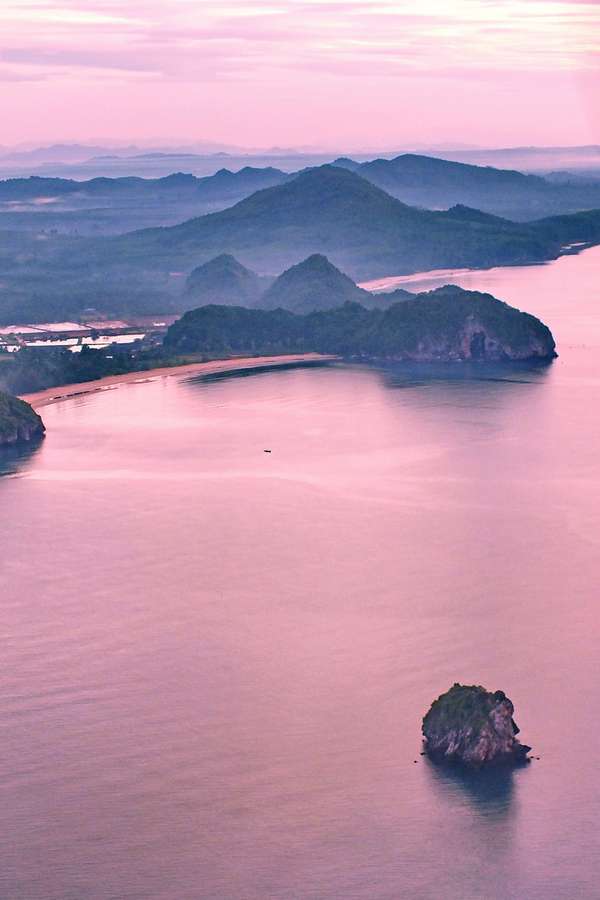 Opposite the village are Ko Khai Island and the KMITL University – Chumphon campus. If you have a vehicle, do make a trip 20 kilometers north from Thung Wua Laen to the Pathio district and check out Ao Bang Son, a fine khaki-sand beach located to the south of Laem Thaen and Bang Son, which is lined with colorful fishing boats. Laem Thaen is a sloping peninsula with a breathtaking cliff view. The Prince of Chumphon shrine, which is painted white all over, is located at Haad Sairee (Sai Ree beach), some 12 kilometers away from the city center. There is a memorial – an old torpedo warship – within the vicinity. Also known as the Kromluang Chumphon Khet Udomsak Royal Palace, the Prince of Chumphon shrine commemorates the accomplishments of Prince of Chumphon; the 28th child of King Rama V. The Prince of Chumphon established the modern Thai navy and is therefore known as the “Father of the Navy.” He passed away in Chumphon in 1923 but still commands deep respect from the Thais, especially those in the marine industry. Another vast beach, Ao Thung Zang, stretches north of Laem Thaen, just east of Chumphon airport, and is ideal for long walks on the sand. Bordered by coconut trees, the sandy white beach is proudly one of the most beautiful and unspoilt beaches in Thailand.
Opposite the village are Ko Khai Island and the KMITL University – Chumphon campus. If you have a vehicle, do make a trip 20 kilometers north from Thung Wua Laen to the Pathio district and check out Ao Bang Son, a fine khaki-sand beach located to the south of Laem Thaen and Bang Son, which is lined with colorful fishing boats. Laem Thaen is a sloping peninsula with a breathtaking cliff view. The Prince of Chumphon shrine, which is painted white all over, is located at Haad Sairee (Sai Ree beach), some 12 kilometers away from the city center. There is a memorial – an old torpedo warship – within the vicinity. Also known as the Kromluang Chumphon Khet Udomsak Royal Palace, the Prince of Chumphon shrine commemorates the accomplishments of Prince of Chumphon; the 28th child of King Rama V. The Prince of Chumphon established the modern Thai navy and is therefore known as the “Father of the Navy.” He passed away in Chumphon in 1923 but still commands deep respect from the Thais, especially those in the marine industry. Another vast beach, Ao Thung Zang, stretches north of Laem Thaen, just east of Chumphon airport, and is ideal for long walks on the sand. Bordered by coconut trees, the sandy white beach is proudly one of the most beautiful and unspoilt beaches in Thailand.
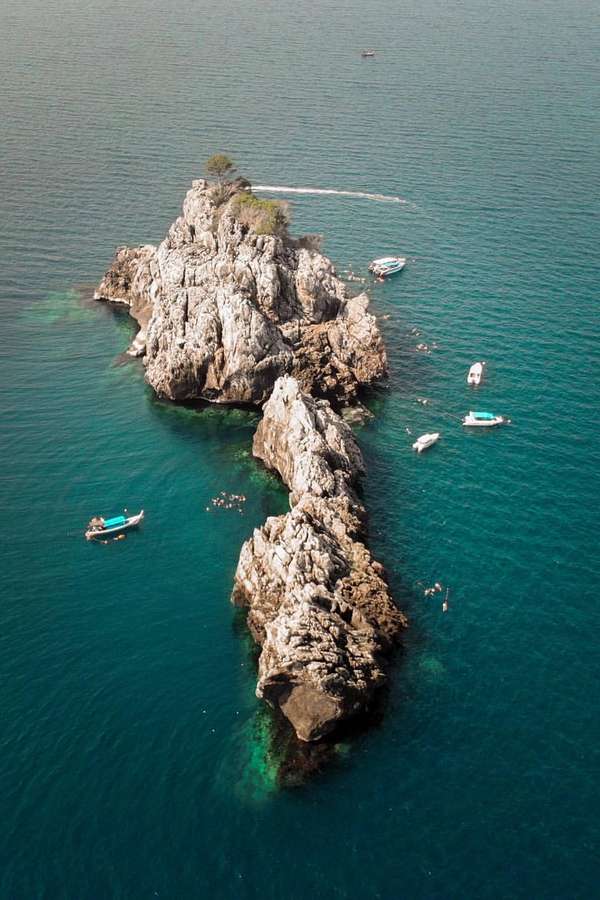 With that being said, island-hopping is quite the experience here—the most prominent being Koh Tao and Koh Nang Yuan but there is also a number of smaller islands such as Koh Samet, Koh Tiap, Koh Kai among others. Although not as popular as Phuket or Koh Samui, they offer a quieter (and less crowded) alternative. One place you must definitely visit is the Mu Ko Chumphon National Park. Comprising over 300 km of both land and sea areas in Chumphon, it also consists of a group of islands in the gulf of Thailand. This national park boasts some amazing beaches, permeable limestone islands, mangrove forests, a long, nature trail, waterfalls, caves, as well as some holy shrines. Chumphon features a number of waterfalls, but the most popular one is the Pho Sa Le Waterfall. You can also stay overnight here–there’s a camping area and bungalows at the Pong Pang Viewpoint. Forty islands offer you many interesting activities, from snorkeling at Koh Ngam Yai and Koh Ngam Noi, playing in the clear water around Koh Rangkajiew and Koh Tonglang to diving among fantastic coral reef at Koh Matra. Here you can snorkel, dive, kite-surf and even fish for squid. The islands of Koh Ngam Noi and Koh Ngam Yai are famous for their thriving reefs and clear water. The cliff formation on Koh Ngam Yai is shaped distinctly in the form of Buddha’s hand. These two islands are also home to the little edible-nest swiftlet. They produce the greatly prized and very expensive principle ingredient of bird’s nest soup.
With that being said, island-hopping is quite the experience here—the most prominent being Koh Tao and Koh Nang Yuan but there is also a number of smaller islands such as Koh Samet, Koh Tiap, Koh Kai among others. Although not as popular as Phuket or Koh Samui, they offer a quieter (and less crowded) alternative. One place you must definitely visit is the Mu Ko Chumphon National Park. Comprising over 300 km of both land and sea areas in Chumphon, it also consists of a group of islands in the gulf of Thailand. This national park boasts some amazing beaches, permeable limestone islands, mangrove forests, a long, nature trail, waterfalls, caves, as well as some holy shrines. Chumphon features a number of waterfalls, but the most popular one is the Pho Sa Le Waterfall. You can also stay overnight here–there’s a camping area and bungalows at the Pong Pang Viewpoint. Forty islands offer you many interesting activities, from snorkeling at Koh Ngam Yai and Koh Ngam Noi, playing in the clear water around Koh Rangkajiew and Koh Tonglang to diving among fantastic coral reef at Koh Matra. Here you can snorkel, dive, kite-surf and even fish for squid. The islands of Koh Ngam Noi and Koh Ngam Yai are famous for their thriving reefs and clear water. The cliff formation on Koh Ngam Yai is shaped distinctly in the form of Buddha’s hand. These two islands are also home to the little edible-nest swiftlet. They produce the greatly prized and very expensive principle ingredient of bird’s nest soup.
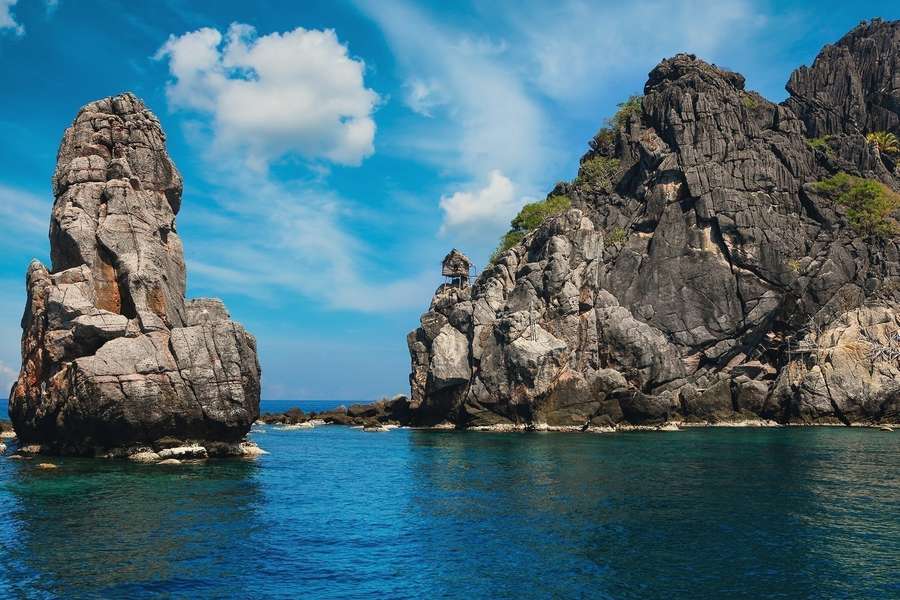 If you happen to be in the area or planning a trip to Thailand during spring: don’t miss the Naval Festival in the provincial capital taking place between March and April every year. The festival is filled with fun activities such as handicraft exhibitions, a seafood festival, a mini-marathon, fishing competitions, and a surf competition. Locals present their talents and you can learn more about the people and their city. In addition, take the time to visit the street night market of Chumphon. Situated along the Komluang Chumphon Road right after the intersection in front of the Chumphon Railway Station, the market offers the best of Thai cuisine and locally produced traditional goods. Sample the pad thai, hai tod (Thai-style fried mussels) hoy tort (oyster omelette), kuay tiao (noodle soup) and khao man gai (chicken rice). Food enthusiasts should also walk down to the Municipal Market (Talad Sod Chumphon) that stretches between Pracha Uthit and Poraminmanka on the south side of town. Munch on finger foods like khanom beuang (crispy taco-shaped sweets) and kluay tort (deep-fried bananas with sesame) while perusing stalls filled with fresh-chopped pig heads, squirming eels and flower garlands.
If you happen to be in the area or planning a trip to Thailand during spring: don’t miss the Naval Festival in the provincial capital taking place between March and April every year. The festival is filled with fun activities such as handicraft exhibitions, a seafood festival, a mini-marathon, fishing competitions, and a surf competition. Locals present their talents and you can learn more about the people and their city. In addition, take the time to visit the street night market of Chumphon. Situated along the Komluang Chumphon Road right after the intersection in front of the Chumphon Railway Station, the market offers the best of Thai cuisine and locally produced traditional goods. Sample the pad thai, hai tod (Thai-style fried mussels) hoy tort (oyster omelette), kuay tiao (noodle soup) and khao man gai (chicken rice). Food enthusiasts should also walk down to the Municipal Market (Talad Sod Chumphon) that stretches between Pracha Uthit and Poraminmanka on the south side of town. Munch on finger foods like khanom beuang (crispy taco-shaped sweets) and kluay tort (deep-fried bananas with sesame) while perusing stalls filled with fresh-chopped pig heads, squirming eels and flower garlands.
 Of course, it is not a Thai province without its temples and Chumphon is no exception. South of the city center is Wat Phra Yai. This temple features a golden statue of Buddha that sits atop winding steps with railings in the shape of mythical snakes called naga. While the temple is not as old as other historical monuments in Thailand, it is still interesting to see. The viewpoint overlooks the eastern plantations and offers a panoramic view of the sea. It is also referred to as Wat Khao Chedi and Wat Tuprasong. North of the city center, in Saphli village lies Wat Pa Yang. The buildings and statues in the temple complex are mostly covered in gold and is a truly stunning sight to behold. Wat Kaew Pra Sert is located on a hill that sits along the coast of the Gulf of Thailand—this part of the coastline is one of Chumphon’s finest. The most prominent statue at this temple is a 10-meter high Buddha Maitreya statue overlooking the beautiful sea and islands opposite it. In the woods behind the temple complex is a “park” with statues depicting the lives in the three realms of heaven, earth, and the underworld, according to Buddhism. Founded by Luang Pho Jong, Wat Kaew Prasert is easily one of the most remarkable temples in Chumphon as this Thai-Chinese temple incorporates elements of Mahayana and Theravada Buddhism, Hinduism, as well as local Thai beliefs. Another temple is Wat Chao Fa Sala Loi which is about eight kilometers from town. This old Buddhist temple is particularly important to the people of Chumphon, who revere a monk named Luang Pu Song. He passed away 36 years ago but this venerable monk is believed to be so holy that his body did not decay after his death. The temple is open to visitors daily from 8:00 am to 5:00 pm.
Of course, it is not a Thai province without its temples and Chumphon is no exception. South of the city center is Wat Phra Yai. This temple features a golden statue of Buddha that sits atop winding steps with railings in the shape of mythical snakes called naga. While the temple is not as old as other historical monuments in Thailand, it is still interesting to see. The viewpoint overlooks the eastern plantations and offers a panoramic view of the sea. It is also referred to as Wat Khao Chedi and Wat Tuprasong. North of the city center, in Saphli village lies Wat Pa Yang. The buildings and statues in the temple complex are mostly covered in gold and is a truly stunning sight to behold. Wat Kaew Pra Sert is located on a hill that sits along the coast of the Gulf of Thailand—this part of the coastline is one of Chumphon’s finest. The most prominent statue at this temple is a 10-meter high Buddha Maitreya statue overlooking the beautiful sea and islands opposite it. In the woods behind the temple complex is a “park” with statues depicting the lives in the three realms of heaven, earth, and the underworld, according to Buddhism. Founded by Luang Pho Jong, Wat Kaew Prasert is easily one of the most remarkable temples in Chumphon as this Thai-Chinese temple incorporates elements of Mahayana and Theravada Buddhism, Hinduism, as well as local Thai beliefs. Another temple is Wat Chao Fa Sala Loi which is about eight kilometers from town. This old Buddhist temple is particularly important to the people of Chumphon, who revere a monk named Luang Pu Song. He passed away 36 years ago but this venerable monk is believed to be so holy that his body did not decay after his death. The temple is open to visitors daily from 8:00 am to 5:00 pm.
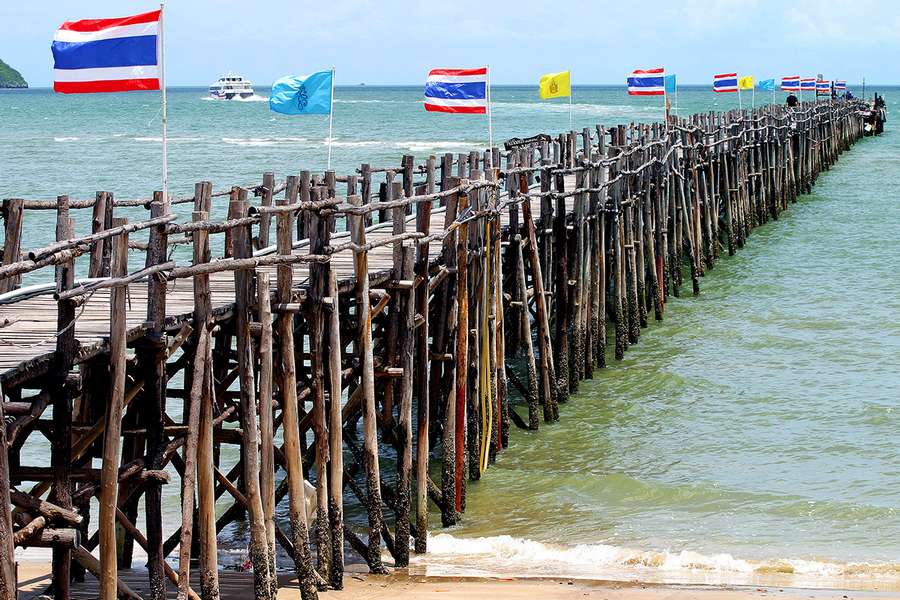 To know more about Chumphon, visit the Chumpon National Museum. It’s not one of Thailand’s biggest or best national museums, but the prehistoric pottery, axes and jewelry found here will appeal to history enthusiasts. The museum includes interactive displays of architecture, historical, cultural and military pieces dating back 4000 years. There are also models of local house styles and photos from Typhoon Gay, which hit Chumphon in November 1989. It is open from Sunday to Wednesday, from 9 am to 4 pm, at a small fee. Chumphon can be reached via train, bus or minivan. You can easily arrive in Chumphon from anywhere in Thailand by bus and from Phuket or Krabi, buses leave for Bangkok every 2 hours. Since Chumphon is on the way, it’s easy to jump on here and arrive in Chumphon in just a few hours. On the train, both first and second class offer an admirable view of the Thai landscape, as the urban jungle fades into rolling hills and fresh air. The ferries from the island of Koh Tao and on to Koh Phangan and Koh Samui also come through Chumphon. If you choose to travel by air, Thai AirAsia and Nok Air fly directly to Chumphon Airport—the flight takes about an hour or so.
To know more about Chumphon, visit the Chumpon National Museum. It’s not one of Thailand’s biggest or best national museums, but the prehistoric pottery, axes and jewelry found here will appeal to history enthusiasts. The museum includes interactive displays of architecture, historical, cultural and military pieces dating back 4000 years. There are also models of local house styles and photos from Typhoon Gay, which hit Chumphon in November 1989. It is open from Sunday to Wednesday, from 9 am to 4 pm, at a small fee. Chumphon can be reached via train, bus or minivan. You can easily arrive in Chumphon from anywhere in Thailand by bus and from Phuket or Krabi, buses leave for Bangkok every 2 hours. Since Chumphon is on the way, it’s easy to jump on here and arrive in Chumphon in just a few hours. On the train, both first and second class offer an admirable view of the Thai landscape, as the urban jungle fades into rolling hills and fresh air. The ferries from the island of Koh Tao and on to Koh Phangan and Koh Samui also come through Chumphon. If you choose to travel by air, Thai AirAsia and Nok Air fly directly to Chumphon Airport—the flight takes about an hour or so.
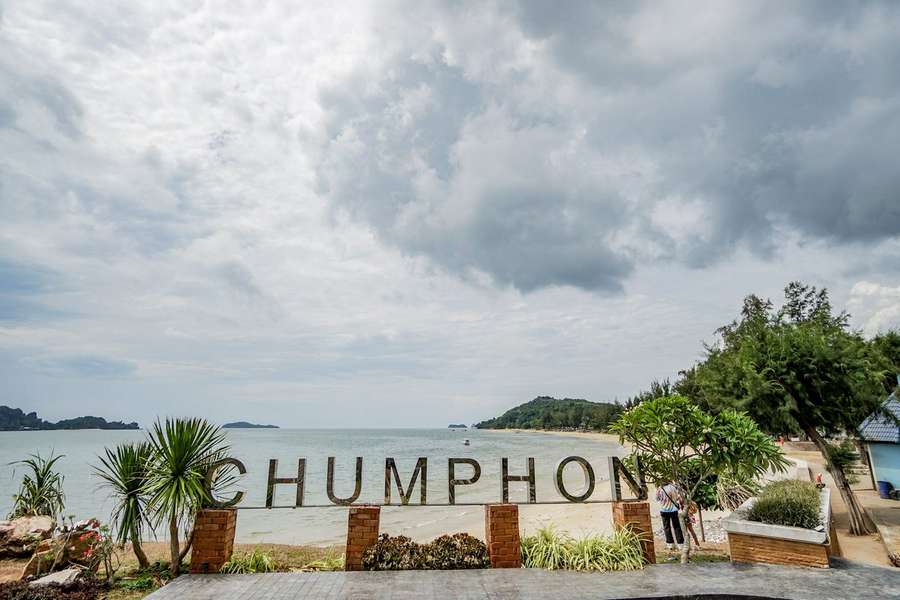 Chumphon is a true getaway to relax, sleepy but welcoming. The natural beauty of Chumphon as well as the variety of cultural events that take place throughout the year beautifully reflect its unique way of life and is a destination that needs to be on your list to check out.
Chumphon is a true getaway to relax, sleepy but welcoming. The natural beauty of Chumphon as well as the variety of cultural events that take place throughout the year beautifully reflect its unique way of life and is a destination that needs to be on your list to check out.


